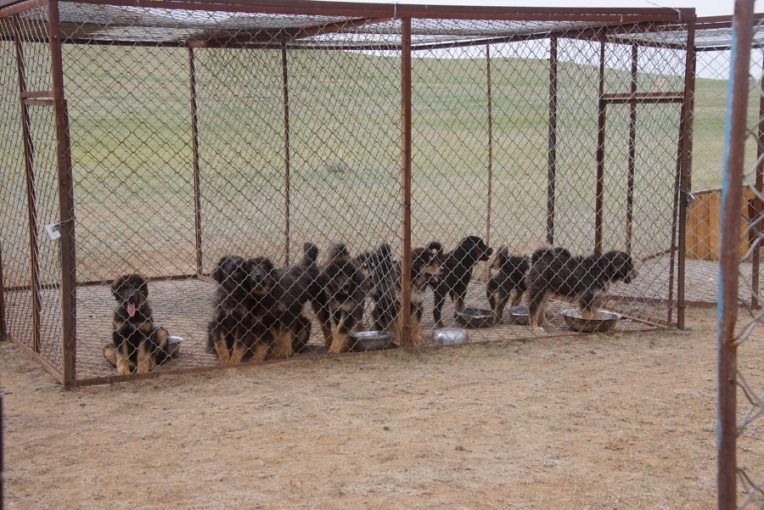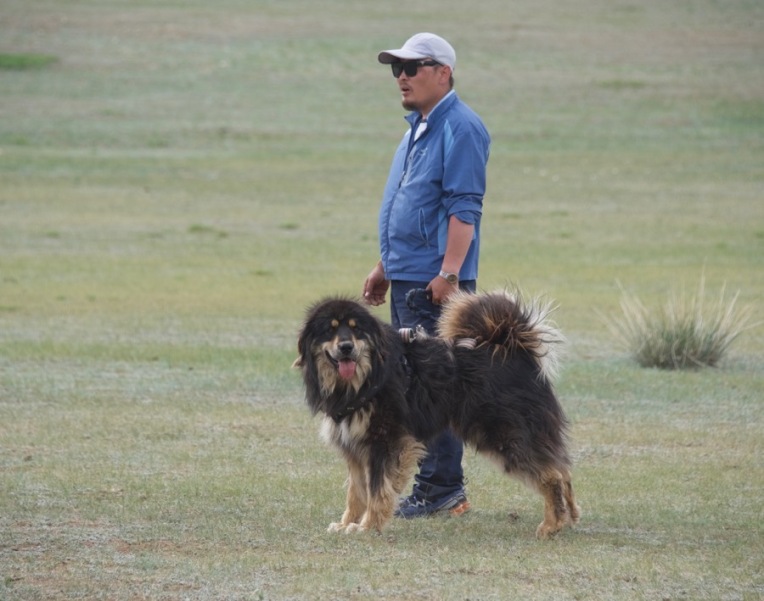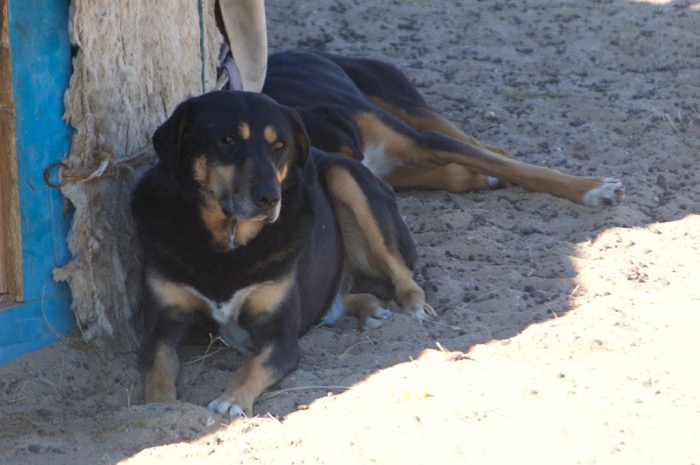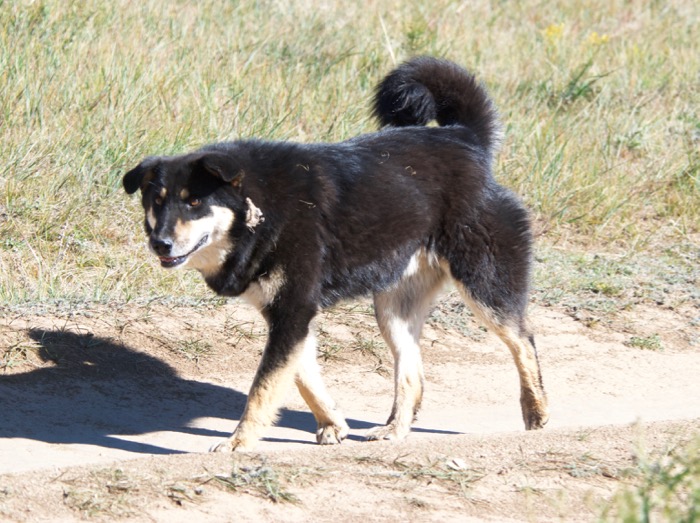
All journeys come to an end and the Expedition concluded near Hustai National Park, one of three places in Mongolia where takhi/Przewalski’s horse have been reintroduced. Of course we went to see the horses, but our main mission was to spend time with the staff of the Mongolian Bankhar Dog Project.


I had been in contact with Greg Goodfellow, the project scientist, before I left for Mongolia in mid-May. We arranged for the Mongolian Bankhar Dog Project to be featured by the Expedition. A mutually agreed upon statement was written which you can read here. It provides all the basic information on what the project mission and goals are.


The project’s first step had been to go out into the countryside and find pure bankhar through DNA testing. There are a lot of mixed heritage dogs due to the Russians turning loose their German Shepherd guard dogs when they left Mongolia after the fall of the Soviet Union, plus other breeds and types have found their way into the country over time. But enough dogs were found to start a breeding program. These were temporary kennels that had just been set up since the project needed to relocate the dogs away from UB. The new permanent ones are in place now, but I don’t have any photos of them yet.

Bankhar are a “landrace”, not a breed, which means they developed their traits through adaptation to the environment they live in, not human selection. The ones I’ve encountered over the years, the “ger dogs”, have always been highly aggressive when we’ve approached a ger in a vehicle or when we’re leaving. And that’s their job. Usually they’re ok once we’ve been in their owner’s ger, but sometimes I’ve seen the dogs held even when we leave. So it was a surprise to see these calm dogs who made eye contact and sought an interaction even with strangers. Still, no fingers through the wire.








The second day of our visit we went with Greg and Baagii as they visited two herder families who have project dogs. There is a protocol, a work in progress as new information and knowledge is gained, for how the recipients are to get the dogs to stay with the livestock 24/7. Most herders have only had ger dogs. The livestock guardian function pretty much died out during socialist times due to collectivization and many being killed. Herders also started to use lethal methods of predator control like poison. So what the project is actually doing is not introducing a new thing, but reviving an old traditional use of the dogs.






I had made arrangements in advance for a special late lunch, khorhog, the “real” Mongolian BBQ. Greg was happy to set it up since the purchase of a sheep by visitors is something that supports the local community and it turned out that our “supplier” was also someone who had project dogs.



We had plans to go horse riding and takhi watching on our last day, but the weather had other ideas. A very strong front moved in overnight with heavy wind and rain. In the morning it was pouring and blowing. Batana called in to see what the forecast was, which was that the storm would continue through the day and beyond. It was pretty miserable. We’d had more than our fair share of wind and rain on the Expedition. With no prospect of clearing in sight, our guide and drivers said we needed to pack it up and head back into town and I agreed. Another driver had been sent out, so we and all our gear went into the two Land Cruisers as quickly as possible. Puugii, our van driver, and Soyoloo, our cook, stayed behind to take down and pack everything else. So we all said our goodbyes and parted. Nomadic Journeys arranged for us to stay at the Bayangol Hotel at no cost to us, a consideration that was greatly appreciated. So in we came from three adventurous weeks in the field to hot showers and soft beds, the 2016 WildArt Mongolia Expedition at its end.
I want to personally thank everyone who made the Expedition possible. First, the staff of Nomadic Journeys, who arranges these very “custom” trips for me every year, particularly Jan Wigsten, one of the owners, who listens to my ideas and plans, offers input and advice and, with the staff, makes my Mongolia travel dreams come true. And we don’t go anywhere without a solid, professional field crew: our super drivers Erdenebat and Puugii,, Soyoloo our wonderful cook and our guide Batana, who rose to every challenge. And Kim and Oliver who, no matter the conditions, and they were challenging at times in a variety of ways, could not have been better traveling companions. I loved being able to share some of “my” Mongolia with them both.
Final notes: Kim Campbell Thornton has written an excellent article on the Mongolian Bankhar Dog Project. You can read it here.
Oliver Hartman is a filmmaker and also a member of the Explorers Club. His company is called “Jungles in Paris”. You can check it out here.
Nomadic Journeys has made all my in-country travel arrangements in Mongolia since my second trip in 2006 (2o16 was trip no. 11). You can find out more about them and their special brand of sustainable, ecologically and culturally responsible travel here.
To learn more about takhi and Hustai National Park, go here.
The website of the Mongolian Bankhar Dog Project is here.







